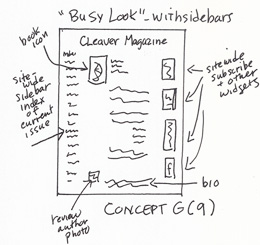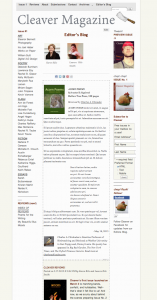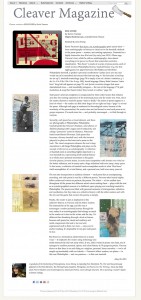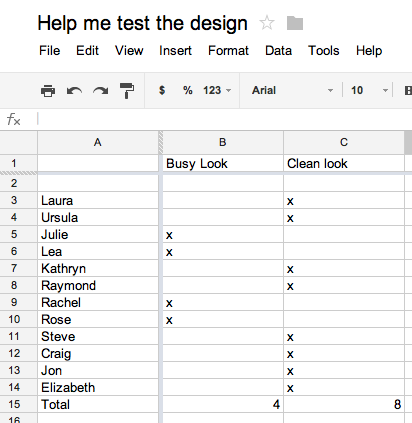My design gap: a way to incorporate occasional reviews of small-press poetry and fiction publications in my quarterly literary magazine.
The concepts I am pursuing: Based on last week’s matrix assignment, I’ve narrowed it down to two approaches. This week I sought user feedback on which design is more appealing, engaging, and easy to use.
A description of my process: I approached my readers through my personal Facebook and our Facebook fan page. I invited them to choose an approach, and to give additional verbal feedback, if they wanted to (many did.)
THE CHOICES:
A. “Busy Look”: In this version, the reviews run in narrow columns between sidewide sidebars. This is an “expensive” concept because, due to css styling settings, I have to set up the blogs differently than other posts. It has a very “webby” feel, but is it worth the extra time and effort?
B. “Clean Look”: In this version, the reviews are isolated on the page.
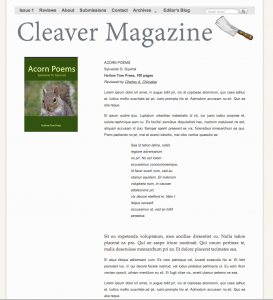
The Results (I put them in a Google spreadsheet):
Conclusion: Two-to-one, the respondents favored the “Clean Look” (B) over the “Busy Look” (A).
In addition to voting, I received these comments:
“D. I am assuming that this is for an on-line publication (that’s how I see Cleaver. Sidebars are very annoying to read on a scrolling screen. I don’t really like multiple columns because I have to scroll up again to continue. I also do not like print that is very wide (like the bottom of D though I do not mind the photos in the columns. I read a line at a time and do not like any printing so wide that I have to do it in more than one scan per line.”
“D (on my computer.) But I wonder if that would work as well on my phone. . .”
“What are you wanting to achieve with this page layout? D is the most handsome, but the least webby–it is much more like the printed page. It looks especially good with the littering of images like in your sample.But in many ways it is a throw-back, not providing the fluidity that good web pages do in a complex site, like a magazine site. This tosses me back to A. If you wanted a quiet place on the site with minimal navigation, or if you were trying to separate this portion of the site out from the rest for some functional reason, then a solution like D works.”
“D. The lines are really appealing.”
“D. The clutter in A gives me a headache!”
“A… i like the busy, webby.”
“Less is more. In other words, D.”
